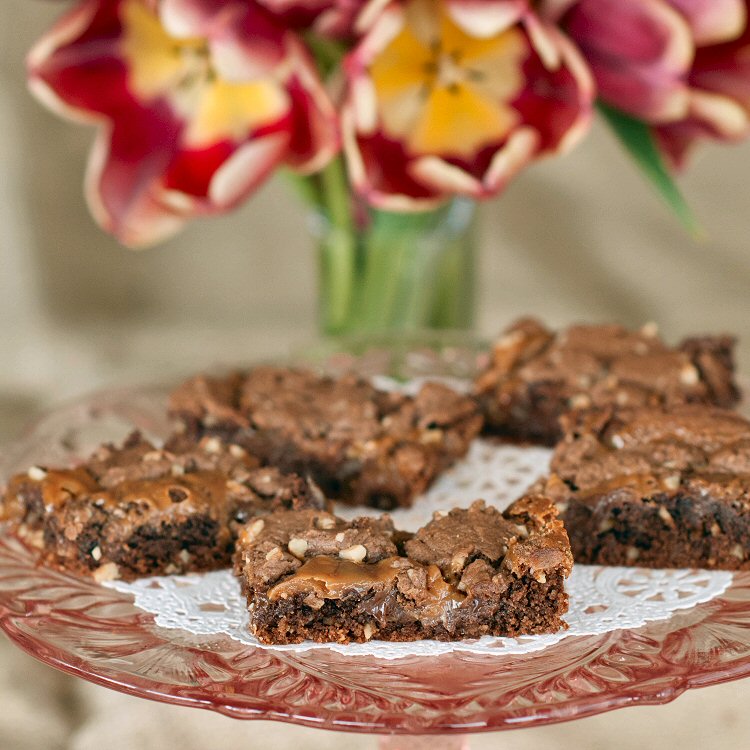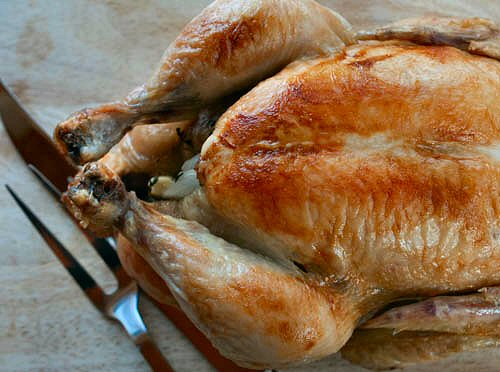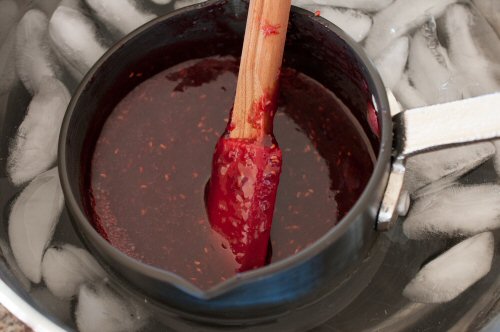To Brine or not to Brine
We tend to be late adopters in general. You’ll probably never hear about some new technique or gadget here first. We sit happily on the sidelines watching and observing to make sure something is really valid before we jump in and start using it. But, when we do finally embrace something, rest assured we’ll holler from the rooftops with a level of gusto that will suggest anyone who has not yet jumped on the bandwagon is surely missing something big.
So it was with brining meat.
I just never really got the concept of brining. When people would explain it to me, they always sort of lost me after “salt.” What I didn’t realize, until experiencing the process for myself, is that when done correctly, the salt preserves the moisture and tenderness in the meat without making the meat saltier. Salt, when introduced to meat through a proper brining process, works to increase the moisture holding capacity of the meat, and also serves to help the meat absorb the seasonings from the brine mixture.
Our foray into brining started innocently enough. One day I returned from the grocery store with these nice, thick “center cut rib pork chops.” Because of the word “rib,” I had assumed they were just big, meaty pork ribs, and that we would cook them like we normally cook ribs. It was the Bartender that pointed out that they weren’t actually ribs but rather thick chops. And we had our dilemma.
The challenge was rooted in my childhood, as so many things are. My mom, being a mother in the 50’s and 60’s, had a propensity for over-cooking pork chops. It wasn’t her fault, really. She had been warned of the perils of eating under-cooked pork, and she was not going to be responsible for subjecting her family to what probably seemed like a fate worse than death: worms. I don’t know if people in those days actually got sick from under-cooked pork, but it was clear that my mother was not going to take the chance. She cooked pork chops to the point where a cobbler could have re-soled our shoes with them. But I should appreciate her effort. We never got worms.
So, I just grew up thinking that pork chops were something to be avoided, at all costs, unless of course I was craving a pork jerky of some sort. Hence the quandary with this large, family pack of pork chops now sitting in our refrigerator. I needed a plan. I started where I often do when I have a problem to solve: on the internet. Researching “how to cook a moist pork chop” I stumbled across all kinds of information about brining meat. And also about how today’s pork can safely be served at lower temperatures than when we were kids. My thoughts about both pork chops and brining started to shift.
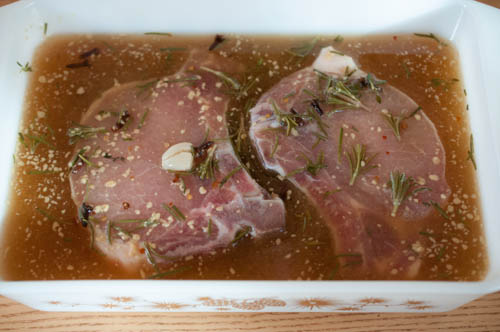
As I started my journey down the brining path, I learned that brining meats is all the rage now in professional kitchens. Who knew? And, that the results are even better when the meat is cooked on a covered barbecue, which was great news because it meant I could delegate the cooking to the Bartender. The process is actually quite simple, which was also a plus.
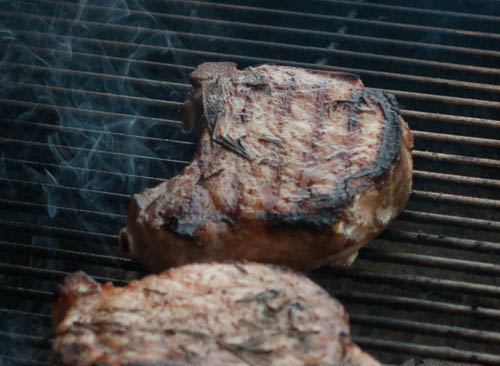
There are just a couple of basic rules to keep in mind when brining. First, there is actually an optimal amount of time for brining pork chops. While opinions on perfect time vary slightly by recipe and source, we went with the 10 – 12 hour recommendation and found that worked well. (If you allow the pork chops to brine longer, they will actually start to absorb the salt and before you know it you’ll have ham.) Second, the brine needs to be completely cool before adding it to the meat. So you’ll need to plan ahead a little. If you’re pressed for time, you can use an ice bath to speed things along. Once brined, you can refrigerate the pork chops for several days before cooking, which for this Hostess is an ideal “make ahead” kind of thing. And, while I’m sure the process would work for any pork chops, we’ve always used the thick cut chops and have had great results (and rave reviews) each time. Finally, as with many recipes, don’t confuse kosher salt with table salt.
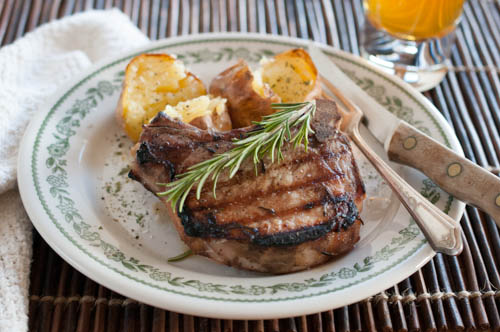
These pork chops have become one of our favorite dinner party main dishes.










